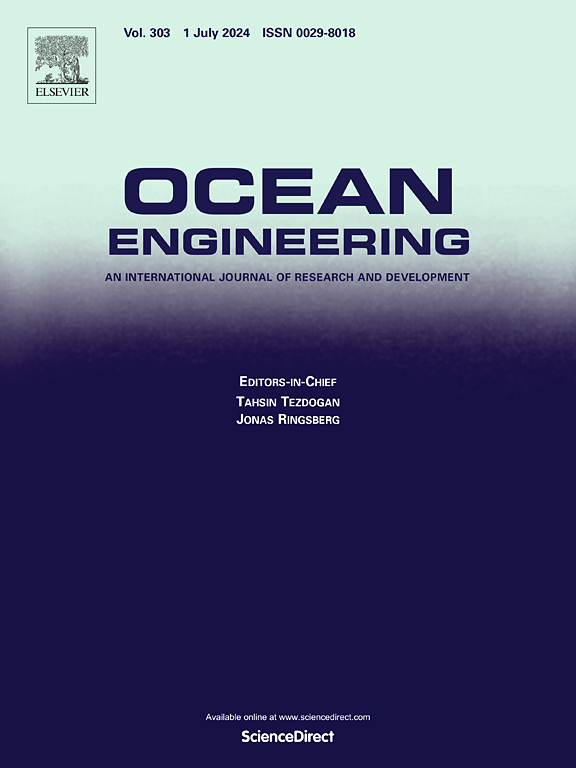Parameterization of waves interacting with homogenous permeable breakwaters: Integrating physical and numerical models with machine learning
IF 4.6
2区 工程技术
Q1 ENGINEERING, CIVIL
引用次数: 0
Abstract
Breakwaters effectively reduce the incoming wave energy by wave dissipation and reflection. Thus, previous physical and numerical modelling studies have been devoted to improve the functionality and stability of these type of structures. However, less effort has been devoted to investigate the structural functionality of permeable breakwaters solely made of prefabricated elements. In this study, two-dimensional laboratory experiments on waves interacting with permeable breakwaters made of armor units were carried out in a wave flume. Analysis of laboratory data show that permeable breakwaters made of cubes presented larger dissipation and reflection coefficients than those made of tetrapods. A volume of fluid-type numerical model, based on the Volume-Averaged Reynolds-Averaged Navier-Stokes (VARANS) equations, was calibrated using the laboratory data. The VARANS model reproduces complex wave transformation processes including wave reflection, dissipation, and transmission. Hence, the numerical model was further employed to conduct a parametric study considering different breakwater geometry, water levels and wave conditions. New parametric formulations for estimating the wave reflection, transmission, and dissipation coefficients were developed using numerical modelling results and Machine Learning (ML). Hence, this study demonstrates the potential of combining physical and numerical modelling with ML for the study of wave-structure interaction.
求助全文
约1分钟内获得全文
求助全文
来源期刊

Ocean Engineering
工程技术-工程:大洋
CiteScore
7.30
自引率
34.00%
发文量
2379
审稿时长
8.1 months
期刊介绍:
Ocean Engineering provides a medium for the publication of original research and development work in the field of ocean engineering. Ocean Engineering seeks papers in the following topics.
 求助内容:
求助内容: 应助结果提醒方式:
应助结果提醒方式:


